Gewandhaus season hinges on a man of 88
mainAlthough Andris Nelsons takes on 15 concerts in the interim season before he becomes Kapellmeister, a larger part of the season rests upon the shoulders of Herbert Blomstedt, who conducts 20 concerts in the season.
Blomstedt, now 88, was Gewandhauskapellmeister from 1998 to 2005.
We hear that he does not use a chair at work. He is on his feet for four hours in rehearsal.
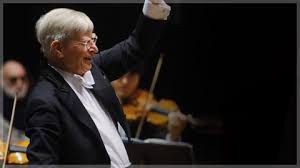

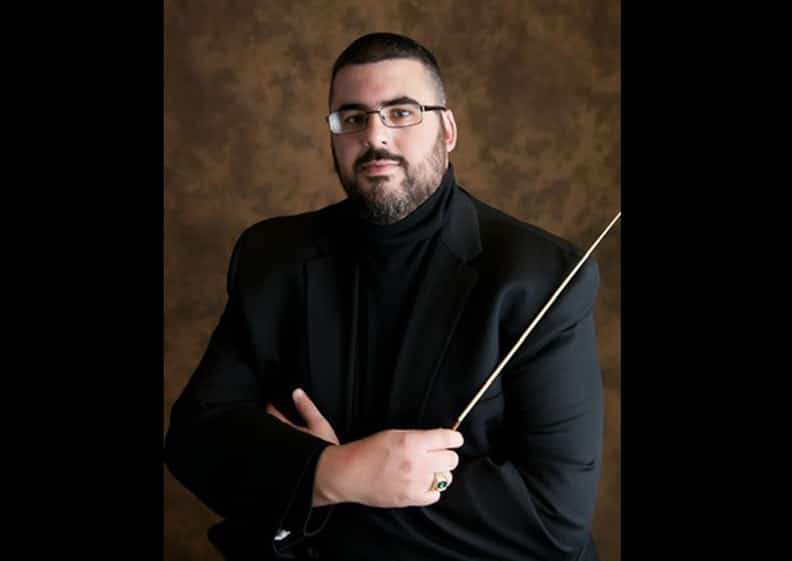
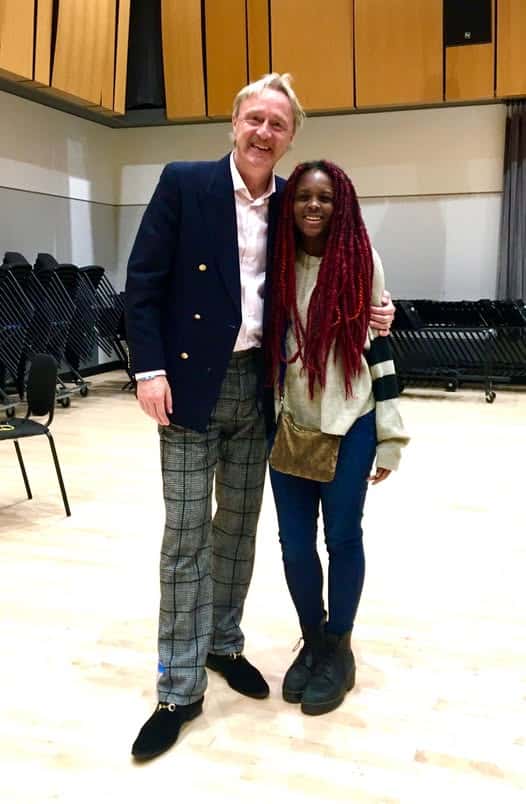
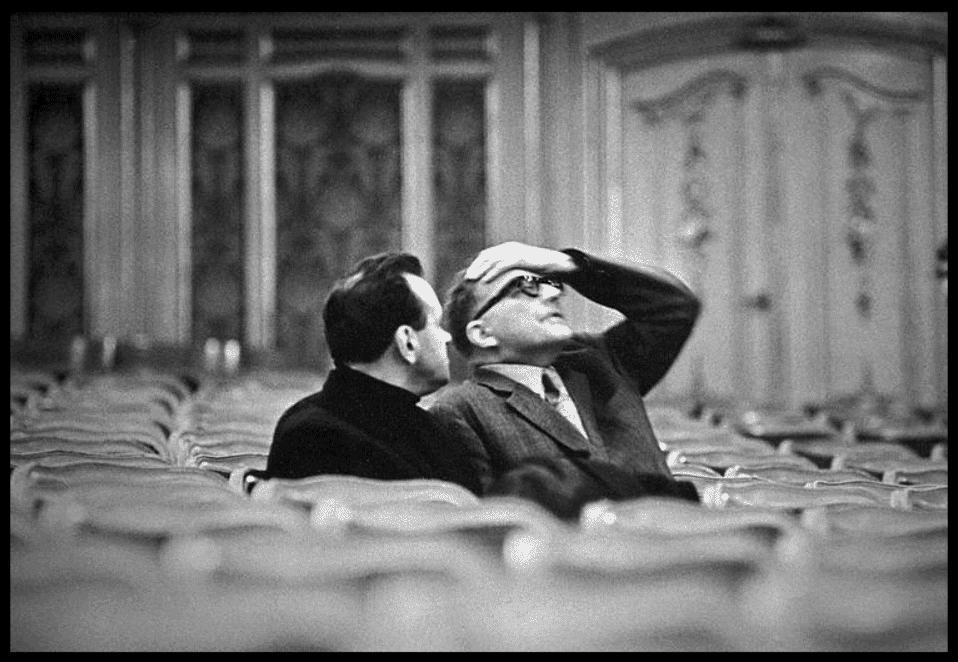
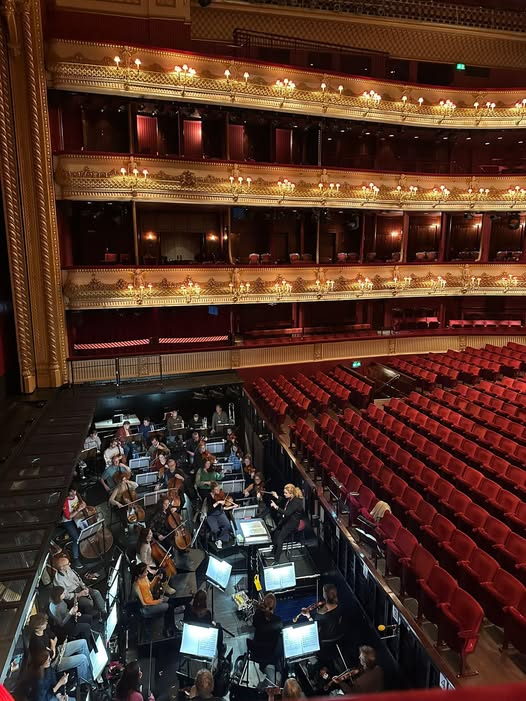
Like HB’s work very much – ever since that first Decca Hindemith CD.
What a wonderful conductor and musician, I hugely admire him! And a true gentleman!
Absolutely agree!!
Wikipedia, fwiw:
“A devout Seventh-Day Adventist, Blomstedt does not rehearse on Friday nights or Saturdays … . He does, however, conduct concerts [on those days] since he considers actual performances to be an expression of his religious devotion rather than work.”
This reminds me of Gustav Mahler, who, when asked whether he was a man of faith, replied: I am a musician.
Music: Divine Love made audible.
Incredible performance at his age. Very motivating for us lesser mortals. Solti, as another example, was superdynamic and commuted with conducting engagements between two continents until well over 80, but didn’t quite make it to 85.
[We hear that he does not use a chair at work. He is on his feet for four hours in rehearsal.]
Having watched him rehearse the Vienna Symphony last summer, I can confirm that this is true. He also only used the scores to find rehearsals numbers. The performances were absolutely terrific.
+1. I saw him conduct the Berliner Philharmoniker in an energetic and excellent performance of Franz Berwald’s Symphony Nr. 3 and Antonín Dvořák’s Symphony Nr. 7 last month.
https://www.digitalconcerthall.com/de/concert/22401
The trailer can be viewed for free and without logging in.
He has an almost god-like status among the musicians of the Danish National Symphony Orchestra which he normally conducts once a year. This year will be special as he will recieve the Sonning Music Prize as well.
I shall never forget his perfomance of Beethovens Missa Solemnis
A wonderful musician who doesn’t look his age at all. Hoping to hear him in Tokyo later this year.
In addition to his interpretations, I’ve been impressed with Blomstedt’s insistance on using the older divided-violins/cellos-left seating plan for which the entire mid-19th-to early20th-century orchestral repertory was composed. The resulting clarity of inner lines is apparent even in audio streamed over the internet. Nelsons has unfortunately gone over to the dark side in Boston, clumping all the fiddles to the left, undoing the musical advantages Levine (and Chailly/Gewandhaus) enjoyed with the old arrangement. I hope when Nelsons takes full control Leipzig he doesn’t repeat the mistake of Boston.
Here Blomstedt explains why he use this seating plan.
https://www.youtube.com/watch?v=P-6Y41tTwNM
An excellent piece, thanks. But there are a few historical errors. The great villain was not Stokowski, but Henry Wood, who reseated his orchestra in the “new” plan in 1911 and claimed it was an innovation in his writings. Stokowski ‘s influence was still pernicious in that, apparently, his recordings influenced Furtwangler to adopt the new plan during WW2, a change that can be followed in contemporary photographs of the Berlin Philharmonic. With Furtwangler in Europe and Stokowski in the USA, the old plan didn’t stand a chance. Toscanini, despite what Blomstedt thinks, never adopted the new plan right up to his last concert with the NBC symphony. Toscanini considered the 1st and 2nd violins the “shoulders” of the orchestra. No extra points for guessing who was the head!
That is very interesting, Sixtus, thank you! Would you be able to name sources for this information? I am asking because I am trying to document this transition in orchestral seating.
Stokowski’s rational for “clumping” the violins together to his left was that the sound holes all faced the audience so there was a bigger tone. Seating the seconds to the conductor’s right has their sound pointing toward the ceiling and backwards away from the audience. Similarly he liked the celli and basses to be at the back of the stage (occasionally on risers behind their colleagues) so their deep bass would project better. Winds to his right. In one interview he stated that there was much more antiphony between stings and winds than between first and second violins (obviously not thinking about the finale of Beethoven 7!).
I for one am a big fan of the “Klemperer layout” at least at Carnegie Hall where the basses are at the back to the left. This makes for a far better aural experience for most listeners in the Hall. Yannick please take note!!!!
Other reports state, that Stokowski got the idea from the emerging recordings and broadcastings back then, where musicians were sitting around one single microphone, not playing into a hall with audience, and in this setup it made more sense to have the second violins sit half left. Mostly for reasons of balance in the quite primitive early microphones, where the Celli sitting on the side would be better balanced in that one mono microphone, which was usually hanging somewhere above the conductors head.
It’s quite silly to have the Celli play sideward to an audience, their sonority suffers, their perceived strength is diminished. (Not though for the conductor, who still hears them frontally, which is the main reason why this maldevelopment is holding on for too long.)
The only layout that correlates with composer’s intention – and also is best for “transmitting” complex polyphonic symphonic music in concert halls until the early 20th century – is the 2nd violins on the right, all things weighed and considered… For music written after that it depends. (e.g. see comment above, Ivan Fischer performing Bartok)
One classic showcase for the composer’s certainty about the 2nd violins sitting on the right is Tchaikovsky 6th symphony, last movement. The opening theme is composed in a “torn” manner, the upper melody jumping from 1st to 2nd violins each note.
In the reprise [G, Andante non tanto] the aggravated and torn affection has been overcome by resignation, and the melody is now stationary. This effect never works in the American/Stokowski seating, clearly negating what the composer intended. There are numerous other examples.
http://hz.imslp.info/files/imglnks/usimg/7/72/IMSLP00569-Tchaikovsky_-_Symphony_No_6_Op_74_-_Fourth_movement.pdf
Also the psychoacoustics for mentally processing polyphony as well as harmonic density are better, if voices with similar timbre and often in “Engführung” are perceived from different angles by the listener, which is not the case if the 2nd violins sit right next (and mostly behind from the listener’s POV) to the 1st.
There is much more to be said…
The summary: The American/Stokowski seating is a maldevelopment, which never made sense in the concert hall, and only made sense for recordings in the MONO recording age, which ended roughly 50 years ago…
…and re your “better deep bass projection” concept for celli and basses: Risers help nothing for improving the fundamental low frequencies. Risers help to project higher overtones and bowing sounds in the higher frequency range, which can help to bring out the “contour” of celli and bass lines, but not the fundamental bass energy.
To have a strong bass sound, you need reflections from large surfaces close to the instruments. Bass reflections need large surfaces, since the ability of a surface to reflect sound is proportional to the wavelength of the frequency of the sound.
For example the fundamental C₅ (“großes C”, open C string Celli) has a frequency of about 66 Hz. Wich equals a wavelength (in air @ room temperature) of about 5.2 meters.
Rule of thumb you need a surface which in any dimension is not smaller than about half the wavelength, to even start reflecting that frequency, preferably bigger. Anything smaller than 2.6 meters in any dimension will thus not “see” and not reflect that fundamental C frequency. Double bass notes reach even lower and need even bigger surfaces for meaningful reflections…
If you have a classic shoebox hall, you have usually several large surfaces in appropriate proximity, that help to create a good bass fundament.
All the amphitheatre/arena halls with audience all around, built for looking, not hearing, like Berlin Philharmonie, etc., suffer from a perceived weak bass energy, because they lack much of these stage enclosure walls.
(which to a certain degree can be compensated by an exceptionally strong and “forward” playing bass group…)
Placing the basses in the back, like it is done in Vienna Musikverein, makes only sense if they stay immediately in front of a large surface, which improves their fundamental strength. If there is no large enough reflecting back wall, then it would not yield the same effect.
There is more to it, but so far for the very basics…
Our orchestra uses the divided violins seating plan (1st violins, cellos, violas, 2nds – with the basses behind the 1st violins/cellos), and the 2nd violins hate it. They can’t hear the firsts – in fact only the first couple of stands can even SEE them – yet they have to play in sync with them constantly and are always being told they’re not together. A friend of mine in the 2nds was sick last week and missed a rehearsal, and I didn’t even know 🙂 I don’t know how it sounds from the audience.
Daniel Barenboim, when commenting on his use of the old plan many years ago at a press event I attended, said that the 2nds and violas in the old plan need to be very able players to be able to handle the exposure, which is, of course, one of the two main advantages of the old plan. I think the word he used was “brave.” Still, there are even youth orchestras that use it successfully, along with such noted ensembles as the Gewandhaus, the MET orchestra, the Halle, the Vienna Philharmonic and the Kansas City Symphony (bless them!).
Add to that the variation of the old plan which the Berliner Philharmoniker & Simon Rattle and a few other orchestras/conductors use at times; 1st violins on the left, then the violas, cellos center-right and 2nd violins on the right.
– http://41.media.tumblr.com/134cfa3874347d5d878d8f634b9d369e/tumblr_nk2vexJmTA1qats4wo2_1280.jpg
– http://40.media.tumblr.com/76e7eb1eb18ac2b7bd34cc7ba1c60ab4/tumblr_nk2vexJmTA1qats4wo3_1280.jpg
Makes sense. The virtual flowchart for the decision making is somewhat like this:
-a priori: Violins split, spread over whole width of stage for “that” cinemascope wide violin sound.
-tbd now: all things considered, where is the best place for the basses.
-once that is settled the rest falls into place: Celli in the middle, instruments frontally projecting into the audience, but closer to the basses. Violas take the left vacant area. (not because they are less important, but because their acoustic requirements are less fickle than those of the outer ranges of the strings 😉
So depending on where the basses are placed, the celli follow.
There is some empiric evidence, that having the basses on the left has a few pros, compared to their position on the right: At the left hey usually are angled better to project frontally into the audience, resulting in a more “open” and full sound. Also they are there better audible for the 1st violins, which can help in better cohesion for precise intonation between the framing voices (or how do you translate “Randstimmen”?) as well as timing.
Vienna with the basses in the back is a special case and usually is advantageous only on a stage that is a) not too large and therefore the basses not too far away from the other string groups, and b) where there is a large reflecting wall immediately behind the basses.
But as with anything, the proof of the pudding is in the eating…
There is much talk among musicians who like a resonant floor to feel their instruments better, particularly bass players and cellists, whose instruments are directly physically coupled to the floor.
While it is true that these haptic resonances can be very advantageous for self perception for several reasons, they are not directly improving the strength and quality of sound out in the hall.
Actually to the contrary, the resonating floor might absorb more energy than a harder floor, the input energy by the player being equal…
BUT… if the player feels better and more confident about his/her playing, of course that psychological advantage can outweigh the physical limitation, and improve the musical sound bottom line. It’s a delicate balance of parameters, that needs to be fine tuned with a lot of blind listening, expertise and patience (and constant fight against prevalent perceptional bias).
Another noteworthy exception: Concertgebouw Amsterdam. Usually the celli on the right. Why? Local experts might know better, but my impression is, that the hall is already a quite low frequency emphasizing environment, where the sideward orientation of the celli might have an advantage, since it emphasizes their “speech intelligibility” higher frequency formants and harmonics.
But… the old seating under Mengelberg there was with only violins and violas down next to the conductor, and the celli sitting behind, spread out, but frontally to the audience, on the steps, basses behind to the right. Possibly for “political” reasons since then the celli demanded their seat next to the conductor, despite an acoustic loss… Anybody knows better?
Does Concertgebouw still sometimes play in that seating under Mengelberg?
http://www.willemmengelberg.nl/sites/default/files/Willem%20Mengelberg/02a1910adam.jpg
Ivan Fischer generally prefers violins divided. The exception is in Bartok’s music, when he has all the violins in the left side. His argument is that the massed together violins provide the kind of sound that is appropriate for the composer.
The placing of the string group is one of those unsolvable problems in music performance which can never be entirely solved with complete satisfacion – it is an art, not science, and makeshift solutions may have to be found at any occasion. In terms of sound quality, the entire group forms a harmonic unity from top to bottom, as written in the score, and placing them geographically, so to speak, is for that reason problematic. It depends upon the music. Pieces which employ the string sound as a whole but differentiated tapestry (Debussy, Ravel, much of Bartok, Dutilleux and the like) are best played with the 2nds at the left, so that the entire range is smooth: violins I & II left, violas in the middle, celli on the right with the basses behind them. Poliphonic music like Mahler’s and Strauss’ do better with v-I left and v-II right and celli in the middle with basses at the back. And then, the acoustics of the hall are an important factor too. If the hall is relatively small – at least, where the podium is – and the sound is travelling very directly above the orchestra, the distance between v-I left and v-II right is much less of a problem (I think the Musikverein has that advantage). The Concertgebouw in Amsterdam has the trouble that the ceiling is very high and the sound spreads immediately above the players so that they have some trouble with hearing what other players are doing.
All these considerations make one realize how relative musical notation is and so much dependent upon the performers.
Critic Lloyd Schwartz asked Nelsons about this during his first press conference as BSO music director and reported that Nelsons didn’t even appear interested in the question!
GEWANDHAUS ORCHESTER, are you listening?! I mean you are only an orchestra with one of the greatest traditions, including a unique sound.
Maybe you should give Blomstedt another 20 year contract, SERIOUSLY!!!
A sound that Chailly practically erased. If you listen to the orchestra “blind”, you would barely distinguish it from any other top notch band.
It is Nelsons’ job to restore the Gewandhaus sound, the same way Jansons restored the Concertgebouw sound which was destroyed by, wait, Chailly!
Yeah, if I may generalize a bit, traditionally the Italians hear from the top down, the Germans hear from the bottom up. Italians imagine melody plus… Germans imagine bass fundament first, harmonic body/middle voices, then melodic line on top…
Is Nelsons the type of conductor who is particularly strong in shaping an orchestra’s sound specifically and with expertise?
Chailly cultivates energy and clear sunshine, German orchestras plough under a darker sky. Italian musicians play like they talk over dinner: extravert, with emotions on the surface; German musicians plumb their emotional depth, introvert, spreading their slow intensity like all-pervading incense. It is quite a job to get German orchestras off the ground (Chailly succeeds in this obviously with his Brahms), as I suppose it is as hard to get Italian orchestras down from the roof.
Nelsons split the BSO antiphonally at the recent Abrahamson/Prokofiev concert. Going tomorrow and will see if he does so again.
I have sung (as a chorister) two concerts with Blomstedt in the past two years. The man is ageless. It’s really remarkable. He is always full of energy.
Long may he wave!
A lovely man and great musician whose gestures demonstrate the truth that less is more, and not just because he is 88. I saw him 20 years ago in Philadelphia (Dvorak cello concerto with Harrell & Nielsen 6) and his podium manner was much the same then. He is courteous to audience members who have the temerity to seek him out after the concert, as I did after a concert with the RCO in The Hague. I asked him why he did not conduct UK orchestras; he seemed to suggest that a lack of what he considered adequate rehearsal time was the reason. Vivat Blomstedt!
He is a very infrequent visitor to UK orchestras, but the Philharmonia seem to have persuaded him for Bruckner. He’s here at the Festival Hall on April 24th. Sadly doesn’t look at all well sold.
And the Gewandhaus season book indicates concerts this coming summer in Edinburgh and the Proms, as well as other European destinations.
I’ve seen Maestro Blomstedt twice with the Los Angeles Philharmonic — the first time about a decade ago when he conducted the Bruckner ‘Romantic,’ which was extremely good, and then last year when he led the Phil in a performance of Bruckner’s 9th that was the stuff of legend. The orchestra gave him a tusch at the end of the performance — one of the only times (according to one of the musicians I talked to) that they’ve awarded such an honor to a conductor since moving into Disney Hall.
What an admirable optimism the Gewandhaus shows. But it has to be admitted that religion and abstinence can be very healthy. Nuns and monks get very old and are never ill.
HB is one of the best around, and an impressive, entirely independent personality. In my dog years I worked for a short while at a big music agency in Amsterdam where he was once, during negotiations about contracts, invited for lunch. The staff had, instructed by a nervous director, bought a collection of the best boutique food accessible through some chique caterers of the neighbourhood – close to the Concertgebouw, an expensive quarter – but he hardly touched it, drinking mere mineral water, and silently spreading a friendly but utterly detached atmosphere around him which perplexed and intimidated the staff more than any demonstration of loud authority could have done.
Boston symphony and nelsons last night-no split violins-
The video is of a fantastic performance, with none of the stale pathos that has been inevitable with this work for so long: it sounds fresh as if written yesterday. Lively tempi, clear sound (influence of HIP?), but meanwhile expressive lyricism where the music asks for it. (To my taste, the tempi in the notorious last mvt generally a bit too fast, and the big double fugue with the chorus a bit too slow, but well, so what?) The choir admirable, the solo singers could have been better – but they had to cope with too fast tempi – the poor tenor threatened to explode.
Amazing that such an old man brings-off such an extremely young performance.
It’s a quite unusual piece, which remains so, in spite of its fame as an iconic work of the repertoire. It has been criticized often, and not by the least. It may come as a surprise to know that none other than Debussy, who hated everything officially ‘classical’ and bourgeois-established, greatly admired the piece and defended it in an article when a critic, and especially refuted the accusation of vulgarity that was often heard from ‘sophisticated’ quarters (and is still heard occasionally). If performed in such fresh and ‘innocent’ way, one can hear the original inspiration of the musical ideas.
It is extremely painful to realize that the composer could never hear the result of his labours.